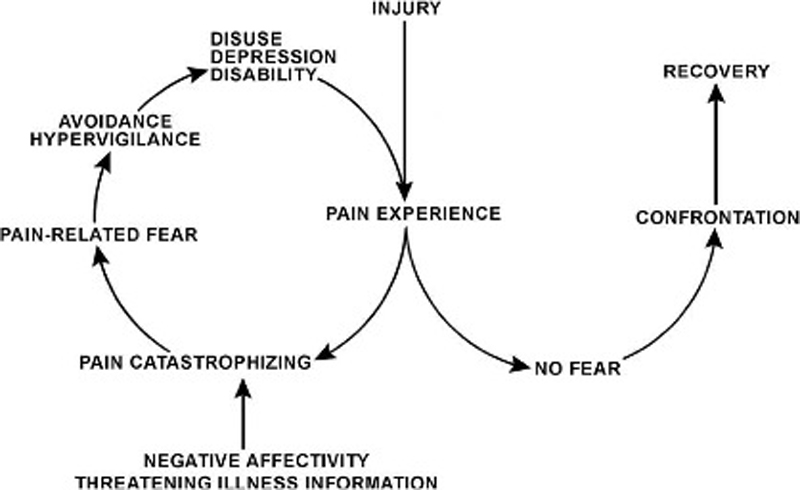A Critical Piece of Quality Documentation: Outcomes Assessment
SOURCE: American Chiropractor 2011 (May) 33 (5): 28-34
by Steven Yeomans, D.C.
Today more than ever, chiropractors are faced with the challenge of running a busy practice and, at the same time, juggling the documenting requirements in light of Medicare audits, proving “medical necessity” to private insurers, and producing documentation that minimizes risk in this litigious world. The requirement of creating a legible, concise account of the patient encounter that includes patient centered functional goals and methods of tracking functional improvements that occur during care, emphasizes the need for the inclusion of outcomes assessment tools in the documentation process. The goal of this article is to provide you with the “knowledge ammunition” needed to accomplish this task without expending volumes of time and effort.
Outcomes assessment tool availability is not a new concept. Back in the 1970’s, long, impractical outcomes tools surfaced that were too cumbersome for routine use in a primary care setting, but shortly thereafter, in 1980, Fairbank introduced the Oswestry (Low Back) Disability Index (ODI). An interesting point is that the original purpose of the ODI was to identify patients that may require “…positive intervention” in the form of psychological care when scores exceeded 60% (defined as “crippled”).
However, it was (also) found to be an effective tool to be used in serial manner to show patient progress over time and identify endpoints of care or plateaus in progress, prompting a change in the treatment planning for the patient. This was followed by other “gold standard” tools including the Roland-Morris Low Back Disability Questionnaire in 1984, and the chiropractic contribution of Vernon and Mior’s Neck Disability Index in 1988.
A gradual increase in the use of these tools occurred in the 1990’s with introduction of many other condition specific tools for headaches, dizziness, carpal tunnel, shoulder pain, hip, knee, and ankle pain, as well as general health tools, and psychometric tools for depression and anxiety assessment. In fact, there are now so many tools available, it may be quite a challenge to decide which ones are most important.
Because chiropractic is generally considered a non-surgical, non-pharmaceutical, form of health delivery with an emphasis in treating neuromusculoskeletal complaints, there are two main domains or areas of importance to track. These include pain, since pain drives patient satisfaction and also drives people into our offices, and functional scales that measure activity tolerance. However, as primary care providers, we have to consider the whole person, not just the biological portion and, hence, tracking psychosocial issues became strongly recommended in the early 1990’s.
It became clear in the literature during the 1990’s and 2000’s that barriers to recovery were not due to a “bad sprain or disc condition” (i.e., the “biological” issues), but rather things like depression, anxiety, coping, and fear-avoidance of activity have consistently been found to impede recovery. In order to embrace this “biopsychosocial model,” the concept of designing one questionnaire to cover all three domains (pain, disability/activity tolerance, and psychosocial issues), a multi-domain, “hybrid” questionnaire was introduced.
First introduced in 1999, is a short, easy to complete (for the patient) and score (for the health care provider) hybrid instrument called the Back-Bournemouth Questionnaire (BQ) was introduced that truly embraced the biopsychosocial model. This was unique, as it tracked these three important domains or categories (anxiety, depression and locus of control).
The importance of this contribution cannot be over emphasized, as this allows the health care provider to quickly identify those that are more likely to fail to respond to treatment due to psychometric barriers to recovery and promotes prompt management options (an emphasis of active care and promotion of self-management) for this more challenging patient. A neck specific version of the BQ was introduced in 2001 (Neck-Bournemouth Questionnaire), again, including the three domains of pain, activity tolerance, and psychosocial factors.
Read the Full Text article in our Outcomes Section:
You may also want to review our:
Outcome Assessment Questionnaires Section




Using Outcomes assessments, I have been able to weed out potential “problem patients” and those that need psych referral. I am also able to see if MY therapy is really working…if not, I change the Tx plan….retest….if no improvement, they are sent OUT to get help. Outcomes are a great way to keep yourself on track, and keep your patient moving forward.